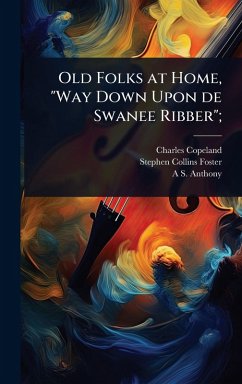"Old Folks at Home," also known as "Way Down Upon de Swanee Ribber," is a classic American folk song by Stephen Collins Foster. First published in 1851, this enduring melody evokes a sense of nostalgia and longing for home. This edition, illustrated by Charles Copeland and A.S. Anthony, offers a glimpse into the song's historical context and its significance in American musical heritage. Fosterâ(TM)s compositions, though immensely popular, reflect the complex cultural landscape of 19th-century America. "Old Folks at Home" remains a poignant example of the era's sentimental ballads and a testament to Foster's lasting influence on American music. This edition preserves the song's original form and provides valuable insight into its historical and cultural background. This work has been selected by scholars as being culturally important, and is part of the knowledge base of civilization as we know it. This work was reproduced from the original artifact, and remains as true to the original work as possible. Therefore, you will see the original copyright references, library stamps (as most of these works have been housed in our most important libraries around the world), and other notations in the work. This work is in the public domain in the United States of America, and possibly other nations. Within the United States, you may freely copy and distribute this work, as no entity (individual or corporate) has a copyright on the body of the work. As a reproduction of a historical artifact, this work may contain missing or blurred pages, poor pictures, errant marks, etc. Scholars believe, and we concur, that this work is important enough to be preserved, reproduced, and made generally available to the public. We appreciate your support of the preservation process, and thank you for being an important part of keeping this knowledge alive and relevant.
Bitte wählen Sie Ihr Anliegen aus.
Rechnungen
Retourenschein anfordern
Bestellstatus
Storno








